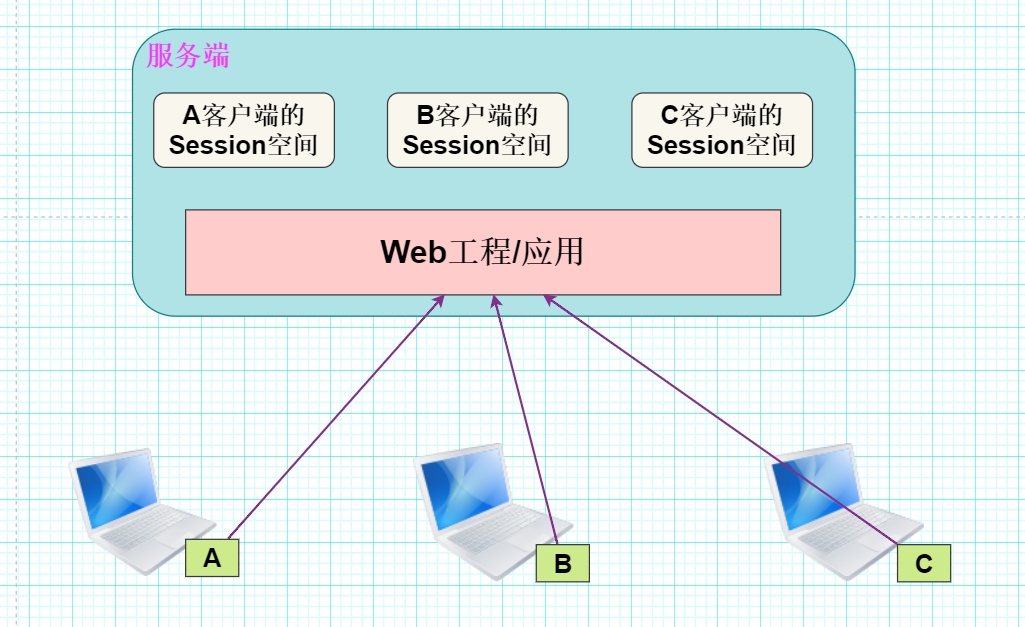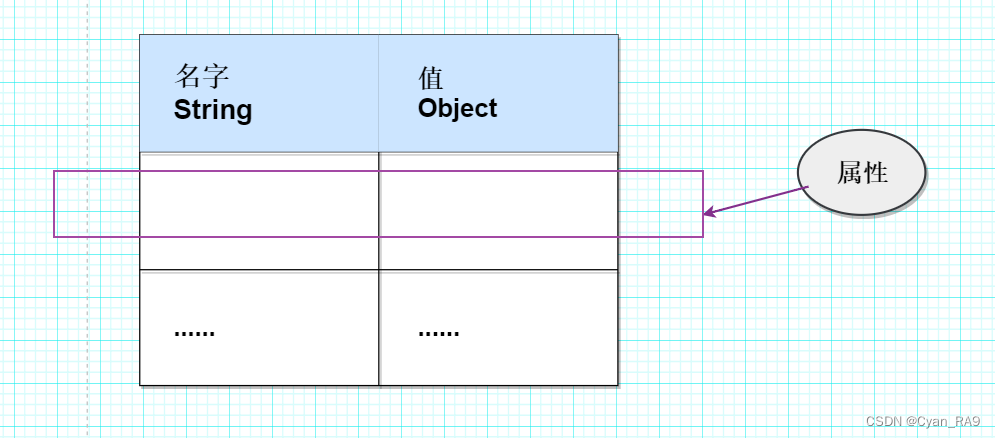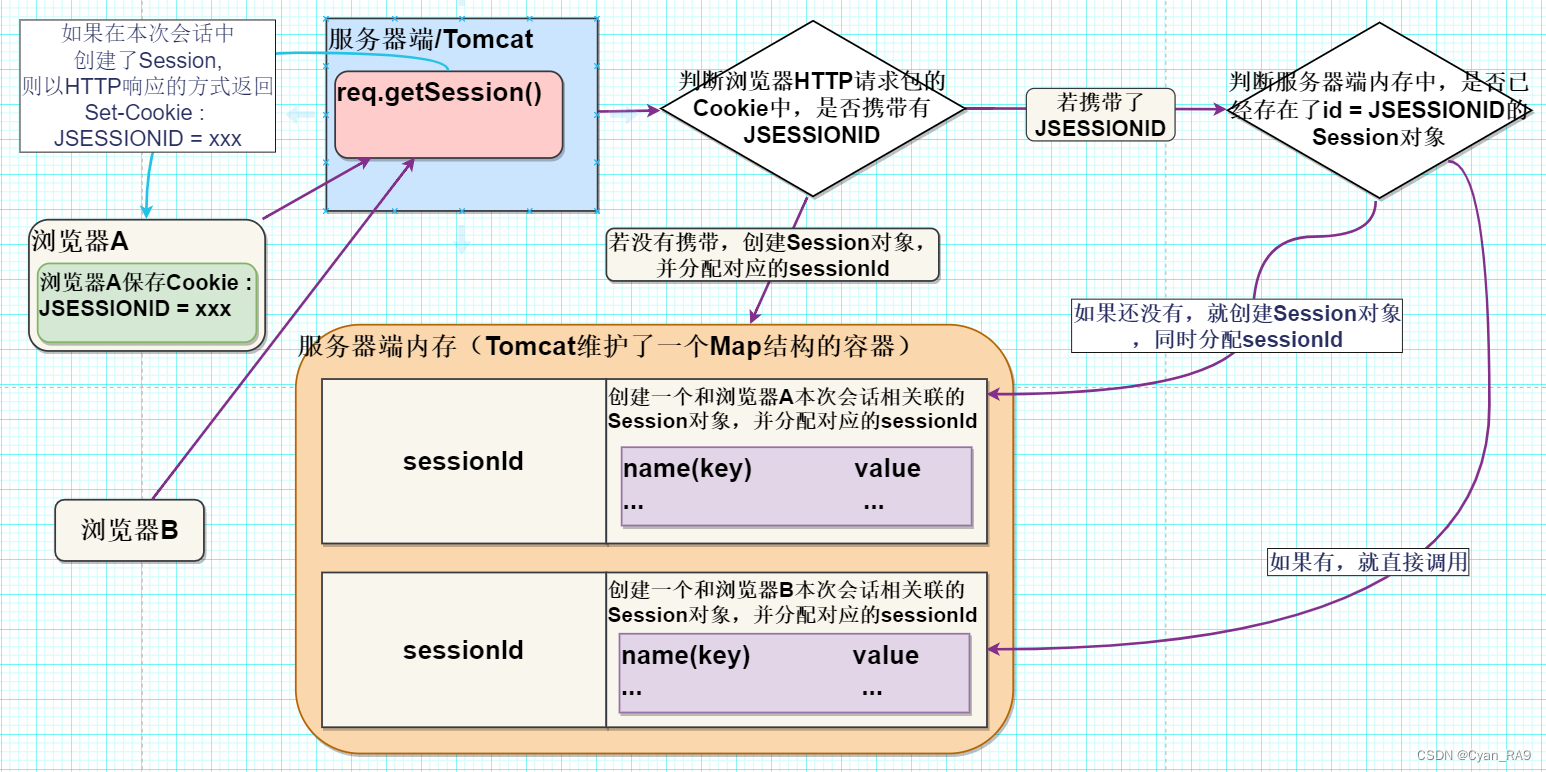JavaWeb 速通Session
目录
2° httpSession.setAttribute(String name, Object val);
3° Object obj = httpSession.getAttribute(String name);
4° httpSession.removeAttribute(String name) :
一、Session的引入
1.什么是Session?
(1) Session是服务器端技术,即Session数据保存在服务器端;服务器在运行时为每一个用户的浏览器创建一个其独享的session对象。
(2) 由于session对象为各个用户浏览器所独享,所以各个用户在访问服务器的不同页面时,可以从各自的session中读取/添加数据,实现自己操纵自己相关的数据。
(3) Session可以用于保存网络商场中的购物车信息,网站登录用户的信息等,也可以防止用户非法登录到某个页面。
2.Session的基本原理 :
示意图如下 :
1° 当用户打开浏览器,访问某个网站,操作session时,服务器就会在服务器端的内存中为该浏览器分配一个独有的session对象,该session对象被这个浏览器所独占。
2° session对象也可看做是一个容器/集合,session对象默认存在时间为 30min(服务器端)。(可通过tomcat安装目录下的conf/web.xml配置文件更改)
3.Session长什么样子?
session是一种类似HashMap的容器,也存放(key-value键值对),每一行就是session 的一个属性。每个属性包含两个部分,前者是属性的名字(String类型),后者是属性的值(Object类型)。
如下图所示 :
二、Session的底层机制
1. Session接口相关的方法 :
1° req.getSession() :
HttpSession httpSession = req.getSession(); 该方法用于返回Session对象,实际是实现了Session接口的实现类对象。第一次调用该方法,是用于创建Session会话,之后调用是获取创建好的Session对象。
2° httpSession.setAttribute(String name, Object val);
该方法用于向Session对象中添加属性。
3° Object obj = httpSession.getAttribute(String name);
Object obj = httpSession.getAttribute(String name); 也可以考虑多态的向下转型。该方法用于从Session对象中得到某个属性。
4° httpSession.removeAttribute(String name) :
该方法用于从Session对象中删除掉某个属性。
5° isNew() :
该方法用于判断是不是刚创建出来的Session对象。
6° getId() :
每个Session对象都有一个唯一标识的Id值,即JSESSIONID;通过getId()即可得到Session的会话Id值。
2.图解getSession()方法底层机制 :
示意图如下 : (共三条线)
联系中容器的实现机制。
3.JSESSIONID的抓包实例 :
1° 创建Session
CreateSessionServlet类代码如下 :
运行效果如下(GIF):
2° 读取Session
ReadSessionServlet类代码如下 :
运行效果如下GIF图 : (注意,先创建属性,再获取属性!)
三、Session生命周期
1.基本特征 :
1° public void setMaxInactiveInterval(int interval) : 设置Session的超时时间(以秒为单位),超过指定的时长,Session就会被销毁。
interval值为正数的时候,设定Session的超时时长。
interval值为负数的时候,表示Session永不超时.
2° public int getMaxInactiveInterval() : 获取Session的超时时间
3° public void invalidate() : 令当前的Session会话立即无效
4° 如果没有调用setMaxInactiveInterval()来指定Session的生命时长,Tomcat会以 Session默认时长为准,Session默认的超时为30分钟, 可以在tomcat的web.xml 设置
2.细节 :
1° Session的生命周期指的是 :客户端/浏览器两次请求最大间隔时长,而不是累积时长。即当客户端访问了自己的session,session的生命周期将从 0 开始重新计算;即指的是同一个会话两次请求之间的间隔时间。2° Tomcat 在底层会用一个线程来轮询会话状态,如果某个会话的空闲时间超过设定的最大值,则将该会话销毁。
3.应用实例 :
CreateSession_EX类代码如下 :
ReadSession_EX类代码如下 :
运行效果 : (如下GIF)
System.out.println("END----------------------------------------------------------------------------------------------------------------------");
- 点赞
- 收藏
- 关注作者








评论(0)